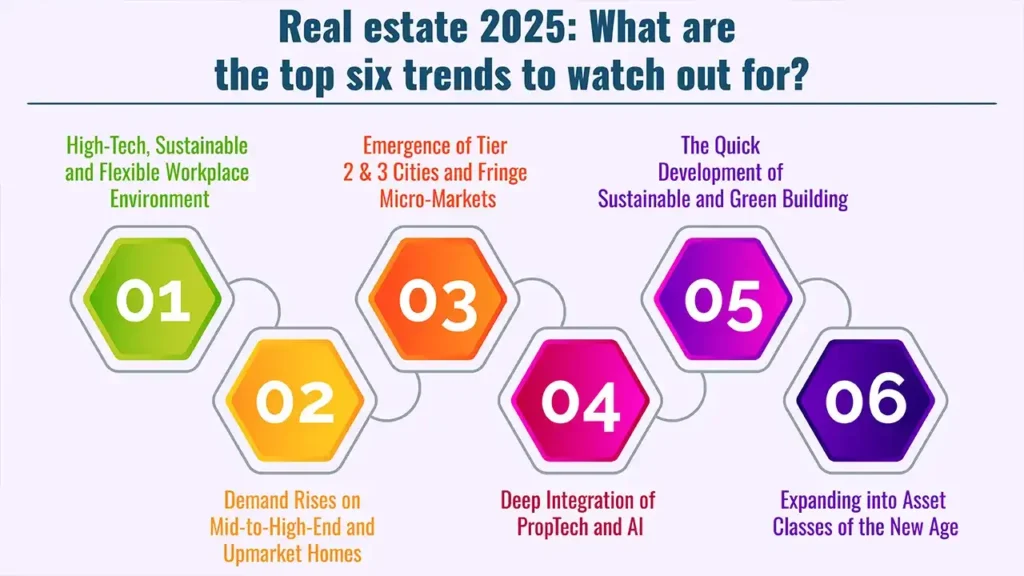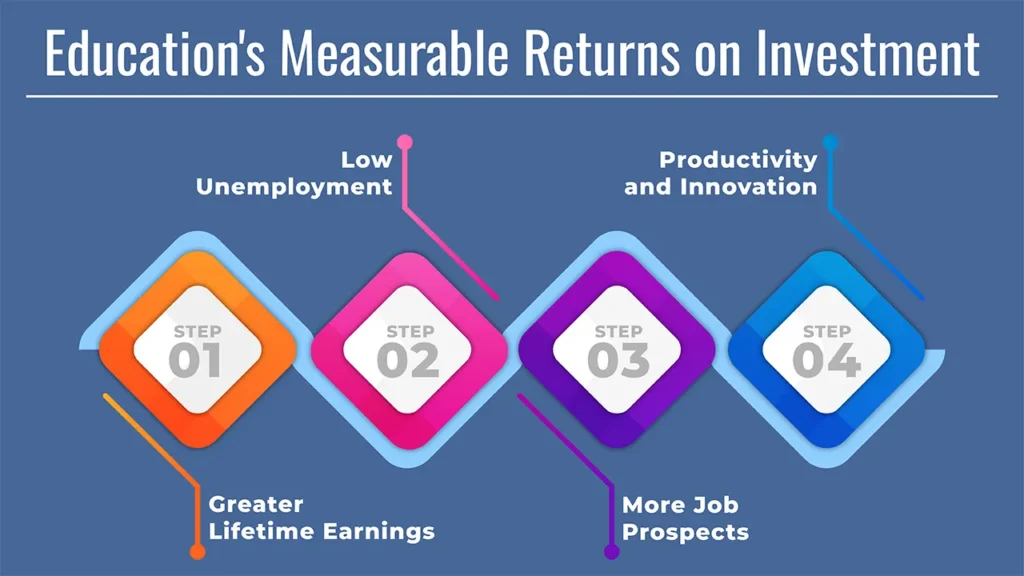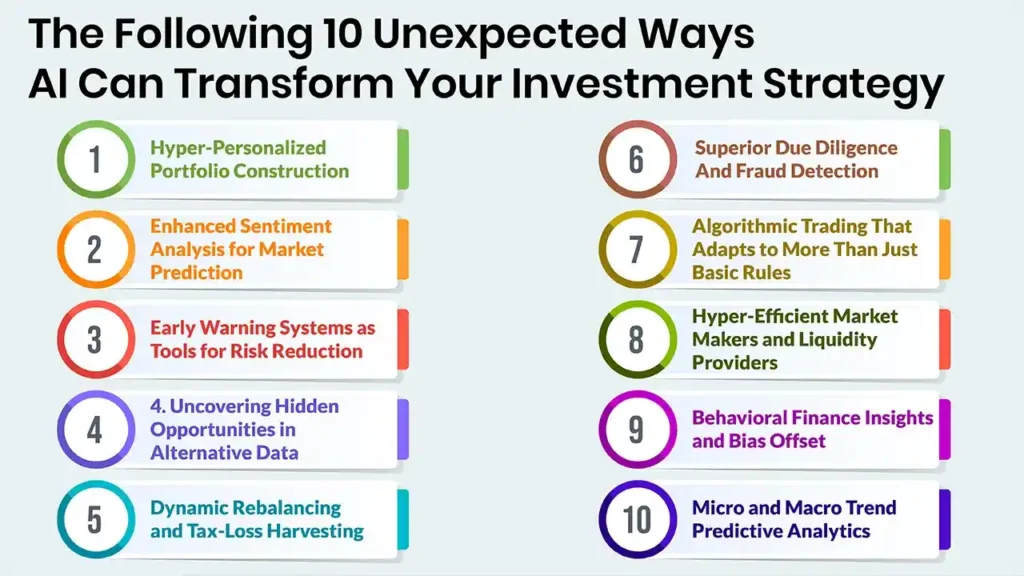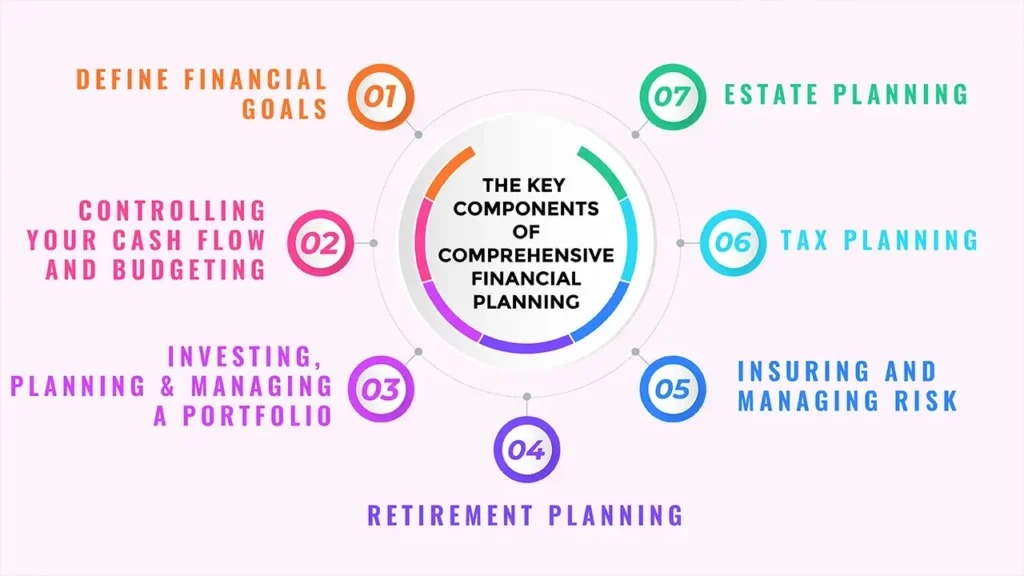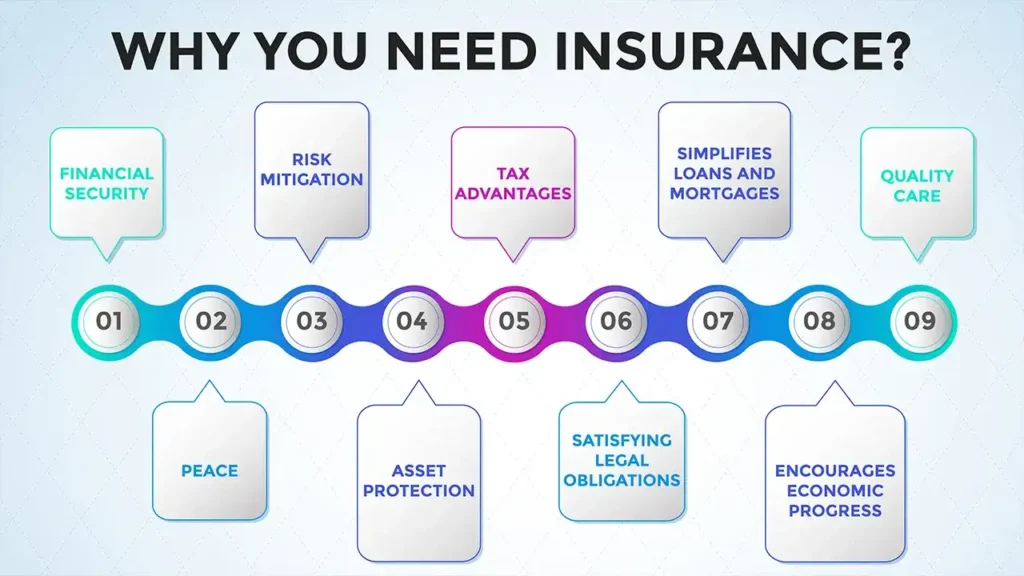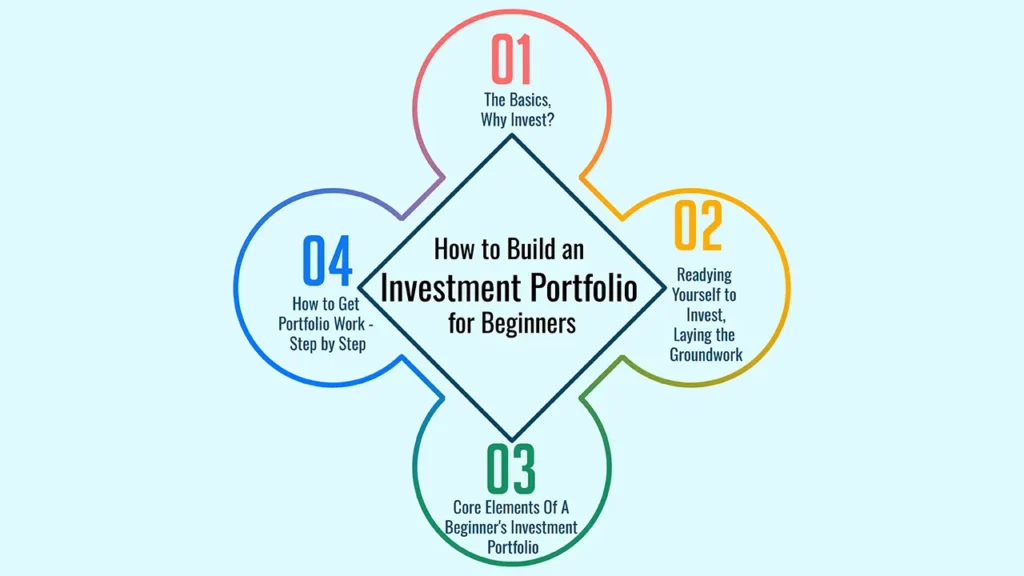In addition to providing a home to live in, real estate is an attractive path to a wealth portfolio. This is where “investment real estate” takes off, turning simple real estate from a place to live into a living, breathing asset.
This guide will break down the terms associated with investment real estate, define it, go over the main advantages you can get, and examine the risks that every investor needs to be aware of.
1. What is investment real estate?
The Meaning of Property Acquired for Profit and Income
Core Definition: Investment real estate Interest in real property (land, buildings, or structures affixed to the land) held by one for use in pursuit of an investment goal, usually to earn a profit on the sale, lease or rental of the property through sale or lease. For a foundational understanding, consult Investopedia’s definition of investment property.
Types of Investment Real Estate:
- Residential: Single-family dwellings, multi-family dwellings (apartments, duplexes), condominiums, vacation rentals.
- Commercial: Office space, retail space (shops, malls), industrial space (warehouses, factories), hospitality (hotels), and healthcare.
- Land: Unimproved land held for future development or speculative gain.
- Key Difference: For profit, not as a primary residence. Tax consequences are frequently not the same as for owner-occupied houses.
2. The Compelling Benefits of Investing in Real Estate
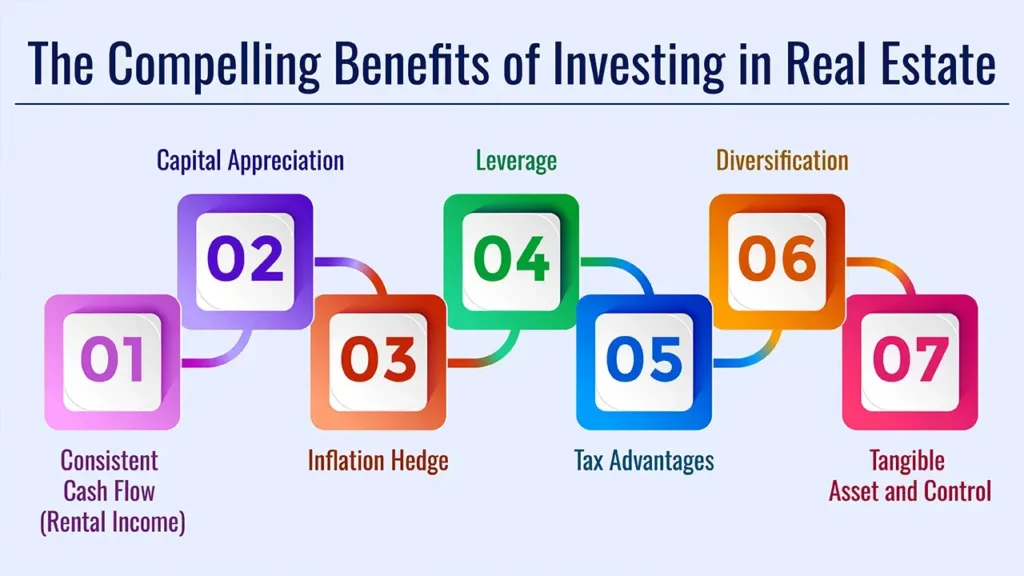
Building Wealth Through Tangible Assets
1. Consistent Cash Flow (Rental Income)
- Detail: Collecting ongoing tenant payments (frequently in the amount of a mortgage and expenses) proves to be a solid income stream.
- Benefit: Variety of income you can continue investing or living off of.
2. Capital Appreciation
- Detail: The actual value of the property is increasing with inflation, market demand, upgraded infrastructure, upgrades on the property, and so on.
- Benefit: Possibility for great long-term profits down the road when the property is sold.
3. Inflation Hedge
- Details: Real estate usually does well when inflation is accelerating because property values and rental incomes usually rise with inflation.
- Benefits: Helps protect the purchasing power of your principal.
4. Leverage
- Detail: The ability to leverage a large asset with relatively little upfront capital (down payment) via borrowed funds (a mortgage).
- Benefit: Amplified return on investment (ROI) on your original investment.
5. Tax Advantages
- Detail: Potential deductions dictated by your mortgage interest, property taxes, operating expenses, and depreciation (which is essentially a non-cash expense that lowers your taxable income).
- Benefit: Able to lower the total amount of your tax bill.
6. Diversification
- Detail: Real estate is often not very closely correlated with other types of assets, such as stocks and bonds.
- Benefit: Can help to stabilise a portfolio during times of market volatility and control risk overall.
7. Tangible Asset & Control
Detail: The fact that it’s a tangible asset – Moody’s is talking about buildings, specifically – that you can look at, touch and often make better.
Benefit: include control and peace of mind, unlike stocks or bonds.
3. The unspoken risks associated with investing
The Limitations and Obstacles
1. Illiquidity
- Risk: Real estate is not easily converted into cash as and when there is a need for a large amount and without the fear of taking a loss. A property sale can stretch across months.
- Mitigation: keep cash reserves up for emergencies; exit plans should be scheduled early.
2. High Initial Fees and Ongoing Costs
- Risk: Large initial capital investment up front (down payment, closing costs) as well as ongoing carrying costs (mortgage, property taxes, insurance, maintenance, repairs, vacancies).
- Mitigation: Comprehensive financial planning; budget carefully to factor in all costs; emergency fund.
3. Market Volatility & Location Risk
- Risk: Declining property values because of economic downturns, interest rate hikes or even local oversupply or neighbourhood changes.
- Mitigation: Careful tracking and due diligence in the market; investment in multiple areas; knowledge of local economic influencers.
4. Management Intensive (for direct ownership)
- Risk: Landlording can be a time-intensive proposition – tenant screening, maintenance, rent collection and legal matters are among the tasks that can be on a landlord’s plate.
- Mitigation: Work with a professional property manager (cost: check); invest in properties that require less active work; pursue more passive investment, such as real estate investment trusts or crowdfunding.
5. Vacancy Risk
- Risk: Every month the property is vacant means not only no rental income but also continuing overhead.
- Mitigation: Draw good tenants; competitive pricing; maintain property quality; have the cash to cover vacant months.
6. Interest Rate Risk:
- Risk: Higher interest rates can push up mortgage payments (if you have an adjustable-rate loan) or make it more difficult for you to sell if at some point you need to.
- Mitigation: Choose fixed-rate mortgages; maintain a good-quality cash flow to take into account rate rises; have a view on what your future market will look like.
7. Regulatory and Legislative Risk
- Risk: Regulations on zoning, rent control, property taxes or environmental laws could make rental properties less profitable.
- Mitigation: Know your local regulations; get legal advice; diversify investments among jurisdictions.
4. How to Invest in Real Estate (Other Than Direct Ownership)
Diverse Pathways to Property Investment
- Direct Ownership: Purchase and rental of real estate, or flipping a house.
- Real Estate Investment Trusts (REITs): Firms that own or provide financing for income-producing real estate in a range of property sectors. They are publicly listed and traded, providing liquidity comparable to shares.
- Real Estate Crowdfunding: Combining money with other investors to finance larger real estate projects (debt or equity).
- Real Estate Mutual Funds/ETFs: These funds invest in real estate companies or REITs.
Conclusion
Real estate investment provides a great source of cash flow and capital appreciation with the problems attached to it. Nor is real estate without nuance, but it is still an incredibly potent asset class for diversified investing and building wealth. A strong grip on its dynamics, together with dedicated research and realistic expectations, can enable investors to make the most of it in the long run.
Call to Action
Advise potential investors to do their due diligence, seek advice from a professional and keep in mind how real estate is part of their larger financial plan.
Frequently Asked Questions
1. Is real estate investing beginner friendly?
Owning rental and real estate directly can be complicated and capital intensive for those new to investing. But a little less invasive options, such as REITs and real estate ETFs, can be great jumping-off points for beginners looking for exposure to real estate with less of an all-in commitment and more liquidity.
2. How does inflation impact real estate investing?
In the broad sense, real estate is a relatively good inflation hedge. As the inflation rate rises, prices on real estate and rental incomes generally rise, which helps to protect or even grow your investment’s buying power.
3. What is a good return on an investment property?
Real estate ROI differs wildly based upon the type of property, location, local market conditions and management efficacy. It can be derived from both rental income (cash flow) and capital appreciation. Although the numbers vary, real estate has historically provided some of the most attractive risk-adjusted returns for long-term investors, especially when compared with inflation.
4. How much does location matter to you when you invest in real estate?
Location is paramount. It impacts property value, rental demand, appreciation potential and liquidity. And an investment in a good location with strong economic underpinnings (jobs, amenities, infrastructure, etc.) tends to have lower risk and higher potential appreciation.
5. What are the biggest risks in real estate, and how can I reduce them?
Illiquidity, high upfront costs, stock market volatility and the labour intensity of direct ownership are the most significant risks. Ways to mitigate your risk include having emergency reserves, due diligence in the market and with your financial packages and costs, professional management, and diversification (geographically and across property types).


